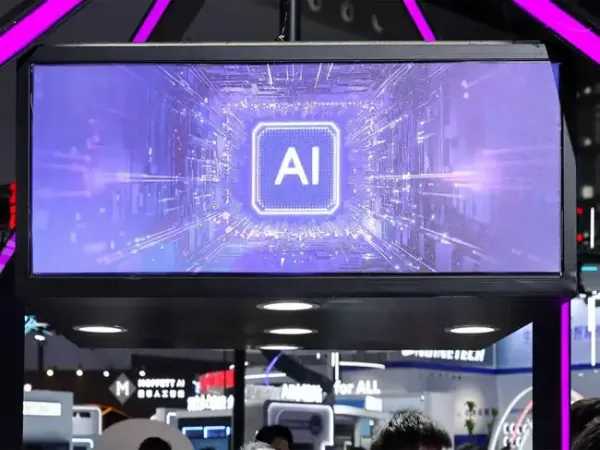Sharp swings in AI-linked stocks last week underscored unusually heavy reliance on artificial intelligence (AI) investment and the wealth it has generated in the US economy. AI-related spending has become so central to growth that a reversal could weaken both output and confidence.
“It’s certainly plausible that the economy would be in a recession (without the AI boom)’’, warned Peter Berezin, chief global strategist, BCA Research. Estimates suggest that investment tied to AI may have accounted for as much as half of inflation-adjusted US GDP growth in H1 2025. Deutsche Bank analysts noted that private business investment outside AI has been mostly flat since 2019, and commercial construction beyond data centres, such as malls and office buildings, has declined.
AI has become the “only source of investment right now,” according to Stephen Juneau, economist, Bank of America. Much of this comes from a handful of tech giants. The bank expects Microsoft, Alphabet, Amazon, and Meta to spend $344 billion in capital expenditure this year — roughly 1.1% of US GDP — up from $228 billion last year.
Barclays estimates that investment in software, computer equipment, and data centres added about 1 percentage point to annualised GDP growth in the first half of 2025. Overall, US GDP grew about 1.6%. After accounting for imported chips, AI spending alone lifted output by 0.8 percentage point (we have 3 diff. values for AI’s share of US GDP growth: 0.5%, 1%, & 0.8%. Suggest we drop this para)
The stock market has also amplified the impact, raising AI valuations, boosting household wealth and, with it, consumer spending. JPMorgan Chase pointed out that gains in AI stocks added around $180 billion — roughly 0.9% — to consumer outlay over the past year. This matters in an economy where consumption drives two-thirds of output.
But the labour-market payoff has been modest. While data centre construction has supported jobs, overall tech employment remains below 2022 levels. The dependence on AI creates clear risks. Valuations are stretched, and if profit expectations falter, stock prices could fall and investment could slow.
Barclays economist Jonathan Millar estimated that a 20-30% market decline could shave 1- 1.5 percentage points off the GDP over a year, with another 0.5 percentage point lost if AI investment stopped growing. Minutes from the Federal Reserve’s October meeting echoed concern over “an abrupt reassessment of the possibilities of AI-related technology.” As Berezin cautioned, combine a fragile labour market with a pullback in capital spending, and “you’re probably going to get a recession out of it.”
“It’s certainly plausible that the economy would be in a recession (without the AI boom)’’, warned Peter Berezin, chief global strategist, BCA Research. Estimates suggest that investment tied to AI may have accounted for as much as half of inflation-adjusted US GDP growth in H1 2025. Deutsche Bank analysts noted that private business investment outside AI has been mostly flat since 2019, and commercial construction beyond data centres, such as malls and office buildings, has declined.
AI has become the “only source of investment right now,” according to Stephen Juneau, economist, Bank of America. Much of this comes from a handful of tech giants. The bank expects Microsoft, Alphabet, Amazon, and Meta to spend $344 billion in capital expenditure this year — roughly 1.1% of US GDP — up from $228 billion last year.
Barclays estimates that investment in software, computer equipment, and data centres added about 1 percentage point to annualised GDP growth in the first half of 2025. Overall, US GDP grew about 1.6%. After accounting for imported chips, AI spending alone lifted output by 0.8 percentage point (we have 3 diff. values for AI’s share of US GDP growth: 0.5%, 1%, & 0.8%. Suggest we drop this para)
The stock market has also amplified the impact, raising AI valuations, boosting household wealth and, with it, consumer spending. JPMorgan Chase pointed out that gains in AI stocks added around $180 billion — roughly 0.9% — to consumer outlay over the past year. This matters in an economy where consumption drives two-thirds of output.
But the labour-market payoff has been modest. While data centre construction has supported jobs, overall tech employment remains below 2022 levels. The dependence on AI creates clear risks. Valuations are stretched, and if profit expectations falter, stock prices could fall and investment could slow.
Barclays economist Jonathan Millar estimated that a 20-30% market decline could shave 1- 1.5 percentage points off the GDP over a year, with another 0.5 percentage point lost if AI investment stopped growing. Minutes from the Federal Reserve’s October meeting echoed concern over “an abrupt reassessment of the possibilities of AI-related technology.” As Berezin cautioned, combine a fragile labour market with a pullback in capital spending, and “you’re probably going to get a recession out of it.”
